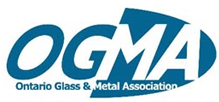Originally published in Glass Canada Magazine, February 2020 Issue
I realize that accounting practices and pension management are not the spellbinding, on the edge of your seat topics you’re accustomed to reading in You Bet Your Glass, but there is a big unsettling bubble that has been building for years, is now on the verge of bursting, and nobody seems to be paying any attention. Well over a million union employees and retirees are about to lose their pensions and their safety net is on the verge of insolvency.
There are 1,400 multi-employer union pension plans operating in the United States representing 10.6 million workers and retirees. A number of these pension plans are due to run out of money in the next two years and it is forecast that 125 plans covering 1.4 million people are expected to run out of money over the next 20 years.
The safeguard backstop that has been in place since 1974 to insure pension benefits is the Pension Benefit Guaranty Corporation (PBGC), a U.S. Government Agency that is not funded by taxpayer dollars. It is already on the hook for paying out the benefits to about 1.5 million people from previously failed pension plans it had insured, and this Agency’s multi-employer program is on the path of running out of money into insolvency itself by the end of 2025. According to the American Academy of Actuaries, more than 10% of the current employees and retirees in these union pension plans will not be receiving their full benefits.
The unions running the “defined benefits” pension plans had to see this coming. The automotive sector in the US faced industry-wide collapse not that many years ago in large part as a result of unsustainable pension liabilities coupled with a decrease in demand for their products that lead to a huge shrinking of the workforce that makes contributions to the plan. General Motors had reached the point where they had 2.5 retirees to support for each active worker. Pension and benefits costs to retirees was costing GM $1,900 per car manufactured. It took a huge renegotiation of collective agreements and government intervention to keep the industry afloat. Similar downsizing of entire industries has resulted in a similar scenario with many of the current pension plans.
In July, 2019 the U.S. House passed legislation that would bail out multi-employer pension plans managed by collective bargaining agreements by giving 30 year loans to insolvent plans so they can continue to distribute promised retirement benefits. Of course, as with all things U.S., this is turning into a political football and the Republican lead Senate has yet to sign off on the funding deal, leaving the retirees dangling. There is a lot of soul searching and wrangling going on and this is understandable under the circumstances. “About 99 percent of the taxpayers who are going to be asked to contribute something through the government’s general revenues are not in these affected plans.” The taxpayer should not be on the hook for the sins of the previous administrations political deals and union administrative mismanagement.
On the home front in Canada, the Auditor General recently” convinced” the Ministry of Finance to make a change in the way they report the liability of future pension payments to federal employees. At a glance this is pretty boring stuff and the feds released this “nothing but an accounting change” between Christmas and the New Year hoping nobody would notice. In the past when presenting the budget and the upcoming years defecit number, the return on the investment in bonds and securities that generate the funds to pay out the federal pension benefits was based on twenty years past averages, years with considerably higher rates of return than are achievable today. Finance was forced to change their predicted returns based on future bond yield curves which are today considerably lower than past performance. As a result the federal deficit has been very understated for many years, not honestly telling the taxpayer how much more was being spent over what was being taken in, and it turns out that this “accounting change” means that we as a country, and by that I mean you and me, will actually be going into debt to the tune of $28 billion more over the next five years than was previously being admitted to by our government .
In the US there will be fighting and the gnashing of teeth over spending taxpayer money on a bailout and I have every expectation that, in the end, the pensioners will get screwed. There will be no such soul searching in Canada. The federal employees will receive every dime and we taxpayers will pick up the tab.
Categories: You Bet Your Glass

